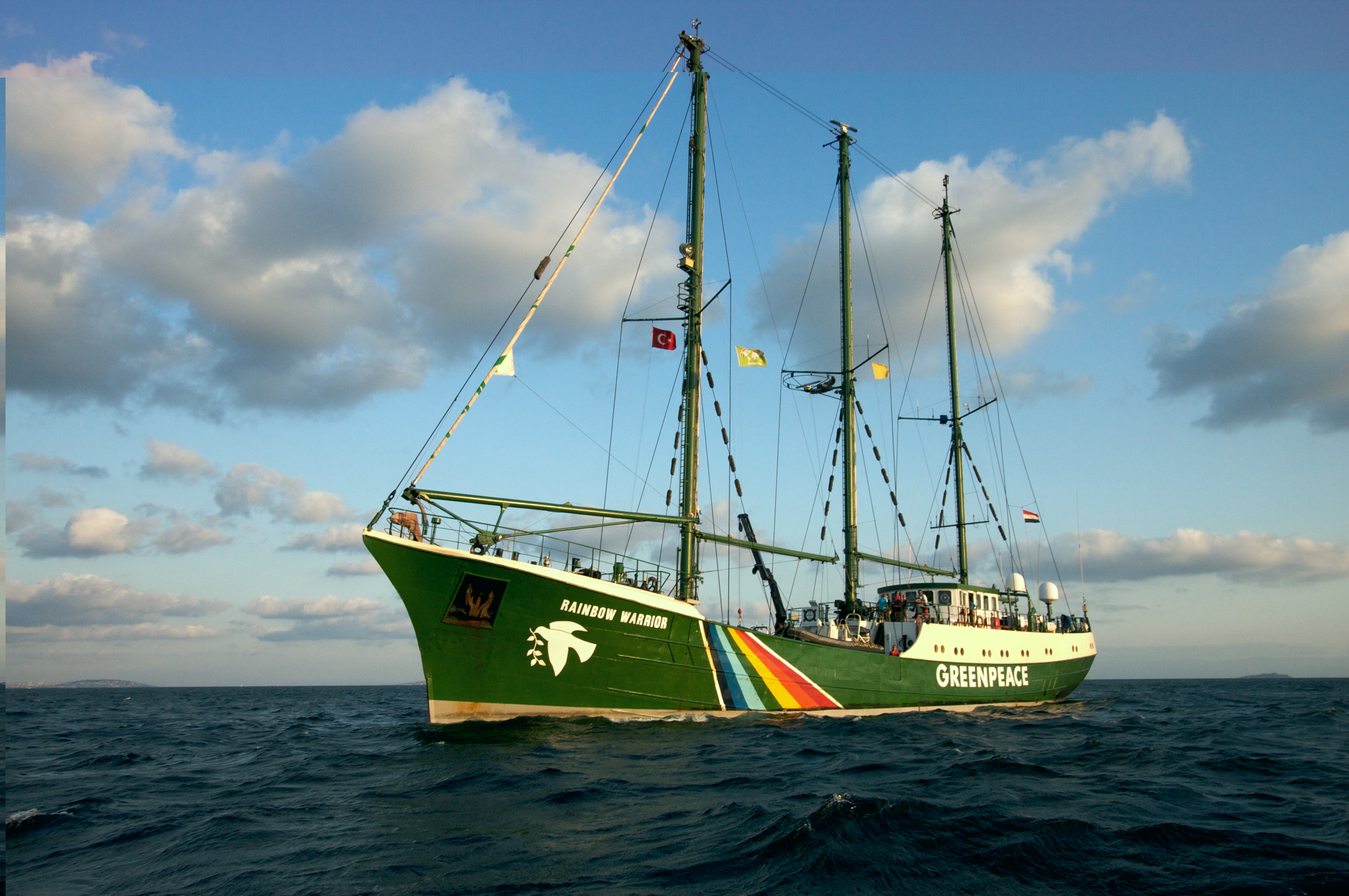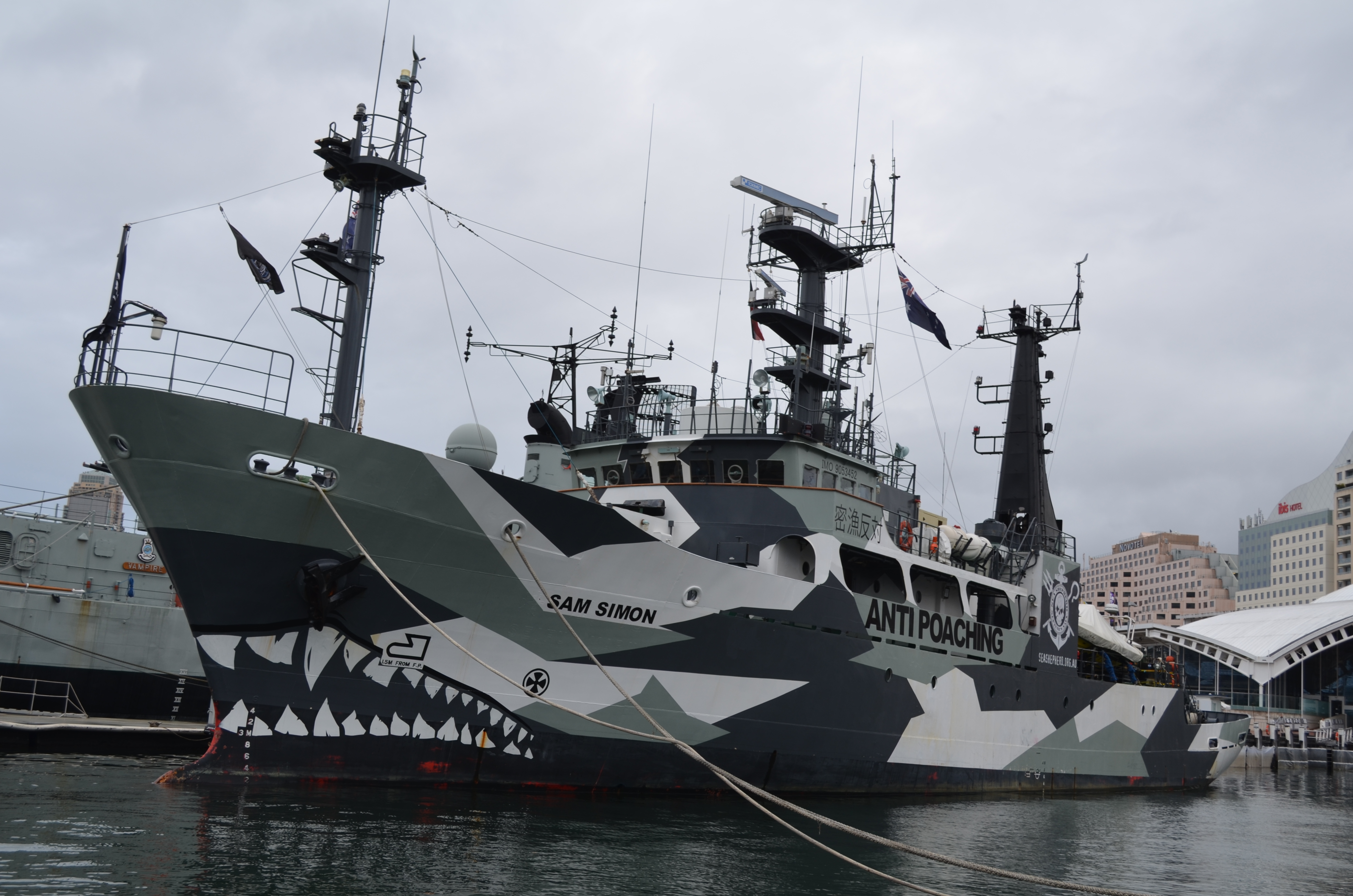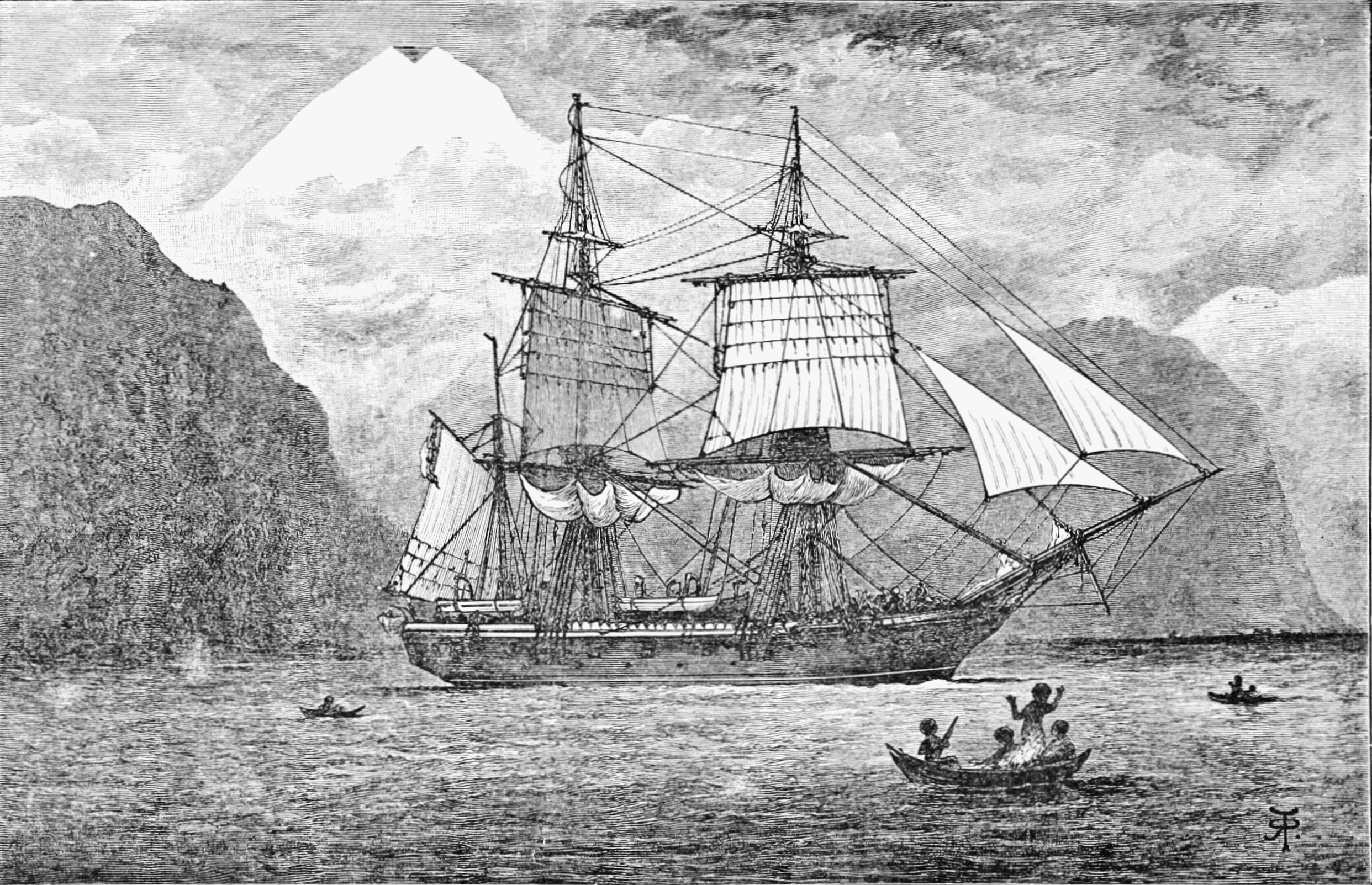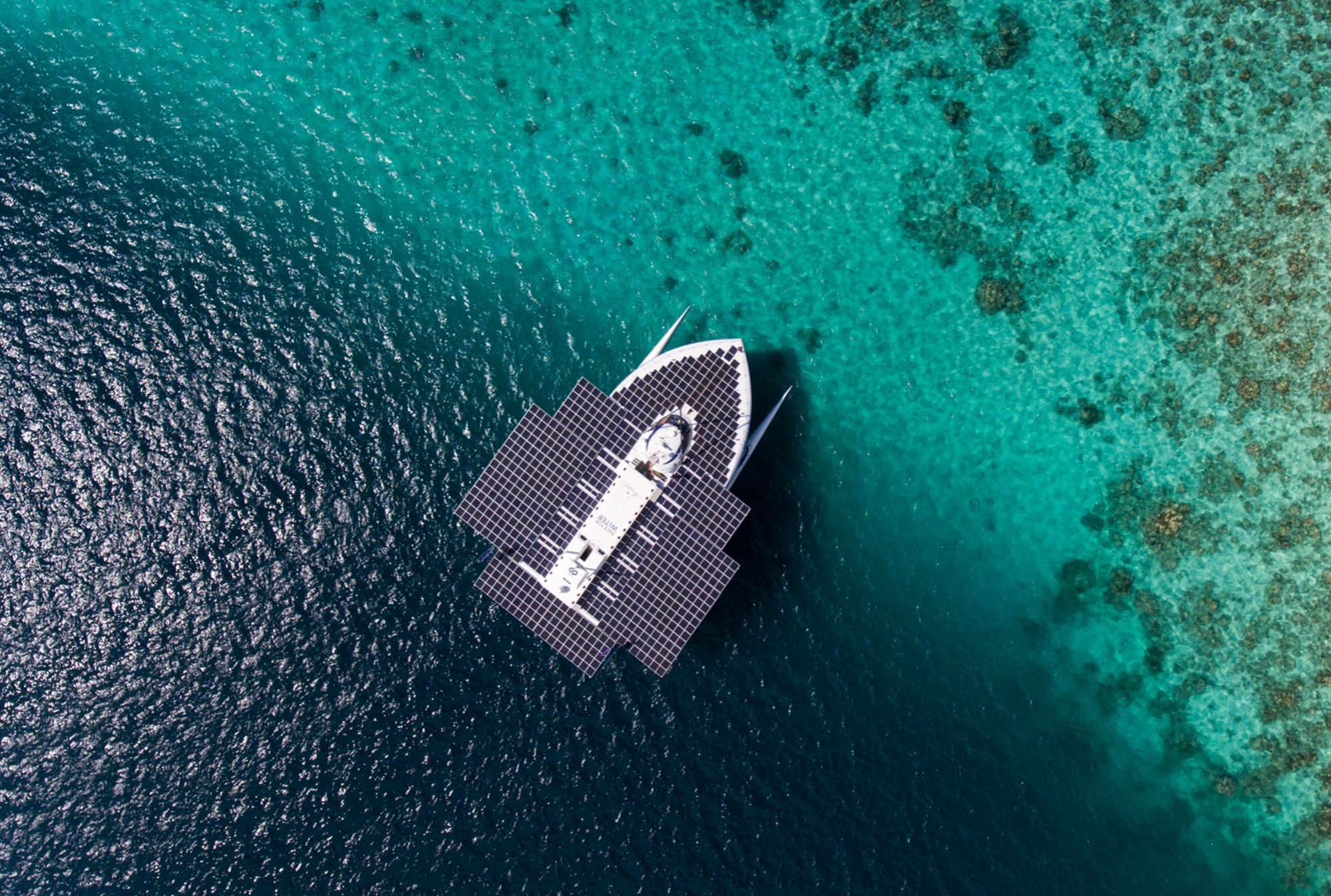All Aboard Planet Earth
First published in Sanctuary Cub,
Vol. 43
No. 9,
September 2023
By Shatakshi Gawade
One thought ever at the fore –
That at the Divine Ship, the World, breathing Time and Space,
All peoples of the globe together sail, sail the same voyage,
Are bound to the same destination.
– Walt Whitman, Old Age Echoes, Leaves of Grass (1891)
About 60,000 years ago Homo sapiens began a tryst with exploration, on foot. Eventually, they graduated to journeys across the sea, which led to discoveries of new lands, species and climates. Over the years, oceanic voyages have been undertaken for resources, travel, transport, and even conservation.
 The Greenpeace Rainbow Warrrior II ship on the Bosphorus Strait in Turkey campaigned against the practice of scrapping ships containing toxic materials. Photo: Salvatore Barbera.
The Greenpeace Rainbow Warrrior II ship on the Bosphorus Strait in Turkey campaigned against the practice of scrapping ships containing toxic materials. Photo: Salvatore Barbera.
The Ancients
Six thousand years ago, the Egyptians used 100-m. boats with sails and oars for transport and movement of material in the Nile. Evidence from 700,000 to a million years ago suggests that seafaring was developed by human ancestors who came before Homo sapiens!
The fabled Noah’s Ark saved Noah and his family and a pair of every animal on Earth from a devastating flood. The Biblical Ark leaves us with a message for times when climate change is triggering more frequent natural disasters such as floods – conservation of every species is crucial for the survival of humankind.
 Egyptian oar boat in hieroglyphics. Photo: Public Domain.
Egyptian oar boat in hieroglyphics. Photo: Public Domain.
The Crusaders
In real life, we can hardly save every species aboard a single ship – there are at least 8.7 million species on Earth! Instead, some humans have taken to the seas for conservation of marine and other species, and to mitigate climate change.
Greenpeace, a global campaigning network founded in 1971, has been sailing across the oceans in their fight for environmental justice. Their sea vessels Rainbow Warrior, Arctic Sunrise and the Witness have campaigned against seal hunting, nuclear testing, and conducted research on climate change. Similarly, for over 40 years now, the non-profit Sea Shepherd has been using direct action to highlight marine environmental issues. They once used their ship to ram into and destroy a pirate whaling vessel in Portugal. Their fleet has 10 ships and several smaller boats.
 A Sea Shepherd ship. Photo: Public Domain.
A Sea Shepherd ship. Photo: Public Domain.
The (R)evolutionaries
The HMS Beagle sailed from 1831 to 1836 from its home country England to South America, and returned via Australia. The journey was the origin of Charles Darwin as the Father of Modern Biology. He collected 5,436 specimens, maintained a 770 page diary, and wrote thousands of pages of notes, which he parsed to develop his theories, especially the theory of evolution by natural selection. He also witnessed colonialism and the horrors of slavery in British colonies.
The Sci-Fi Ships
~ In Twenty Thousand Leagues Under the Sea, the protagonists search for a giant monster that they discover to be a futuristic submarine, the Nautilus commanded by Captain Nemo, who is fuelled by the quest for scientific knowledge and escaping civilisation.
~ The Hitchhiker’s Guide to the Galaxy features a simple human man, who explores the galaxy aboard the spaceship The Heart of Gold, which can pass through every point in every universe simultaneously.
~ In Star Trek – the Voyage Home, a massive, metallic cylinder – the whale probe – threatens to eliminate Earth’s population unless it can speak to a humpback whale.
In the 21st Century, there is more awareness about the polluting impacts of the shipping industry. Enter Porrima. The Swiss vessel runs on renewable energy from the Sun, hydrogen and wind. Gunter Pauli, her designer, says, “When you have no engine running, there’s silence. There’s a real sense of awe and resilience. There’s a clear feeling of, ‘I’m vulnerable – I better use what I have carefully.’” The Porrima’s philosophy is to use resources effectively, with a focus on environmental research.
 The HMS Beagle. Photo: Public Domain.
The HMS Beagle. Photo: Public Domain.
The Pale Bue Dot
Seen from outer space, isn’t the Earth like a spaceship sailing through the vast Universe? More than 70 per cent of the Earth’s surface is covered by oceans, giving it the appearance of a ‘pale blue dot’. Over 80 per cent of the oceans are unexplored, a challenge for researchers and a temptation for extreme travel. U.S. space agency NASA is on a mission to study life in the deepest parts of the ocean to understand other worlds in the solar system. Meanwhile, these same waters are a challenge for migrants in dingy vessels escaping difficult living conditions. Or for the blue whale, which was almost driven to extinction by commercial whaling. It is up to us to protect Spaceship Earth from excesses, because whether we go far up into space or far below into the oceans, humans have one planet to live on and return to.
 The Porrima. Photo: Public Domain.
The Porrima. Photo: Public Domain.
Shatakshi Gawade is an Assistant Editor at Sanctuary Asia. She has worked with mainstream media, as a freelancer, and with organisations that focus on the environment, as a researcher and communication consultant.






